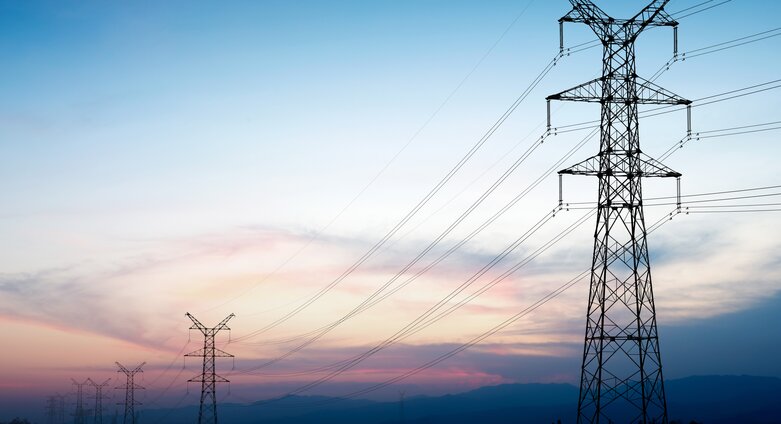ImpactAlpha: Financing power transmission—not just generation—to meet Africa’s climate goals

Renewable energy generation and storage opportunities were a key focus at last week’s Africa Climate Summit in Nairobi, culminating in $26 billion in new funding commitments to climate projects. A large but overlooked energy investment opportunity: power transmission.
Transmission projects are ripe for public-private development and present a significant investor opportunity for delivering the double-bottom-line of attractive returns and sustainable impact. Many other emerging markets have already leveraged such partnerships to contract out essential energy infrastructure and deliver power to a larger population base. In Africa, however, few such models have yet been explored, and Kenya is among the first countries to develop a plan for a public-private partnership in the energy transmission space.
Considering the need, sustainability imperative, and impact potential, it is time for the private sector to jump on the billions of dollars a year transmission infrastructure opportunity in Africa, and for governments to embrace private sector participation in the sector.
Funding shortfall
Africa’s transmission investment needs are estimated at over $45 billion over the next eight years. The continent received about $41 billion in total energy investments over the last decade, with 99.5% of capital going to generation projects.
This underinvestment in transmission has put Africa behind other regions. The 38 countries in sub-Saharan Africa have less than 150,000 kilometers of combined transmission lines – one of the lowest per capita rates of any region globally.
As the continent’s population grows, and investors and governments focus on renewable generation increases, so too will demand for transmission infrastructure to deliver that new power to households. Indeed, the International Energy Agency estimates that achieving near-universal access to affordable electricity in Africa by 2030 will require connecting 90 million people annually – triple the connection rate of recent years.
Public-private partnerships
Most transmission funding in Africa today comes from state-owned enterprises, or SOEs. This form of financing was common worldwide until the 1990s, when many OECD countries shifted financing towards private models. Latin American countries and then Asian countries followed suit. Why? Governments, particularly those grappling with high debt-to-GDP ratios (as many African countries are today) realized that transmission, like generation, does not have to be wholly a state function; there is a role for the private sector to play in financing crucially needed infrastructure.
Private investment in transmission is nothing new– investors have mobilized over $55 billion in other emerging markets over the past 25 years.
India provides a particularly useful example of the success that private financing of power transmission can have. In 2011, the Indian government liberalized the transmission sector to make it easier for private investors to pursue independent power transmission, or IPT, projects at a time when more than 30% of India’s 1.2 billion citizens had no access to electricity. Over the next decade, private investment grew to account for over $11 billion in transmission financing, or 41% of all investments into transmission.
Many such projects were led by Power Grid Corporation of India Limited.
Similarly, in Brazil, the embracing of IPTs has closed transmission gaps. The power transmission sector went from 100% state-owned in 1997 to today including private companies, many of which work in partnership with local, state and federal government agencies.
Kenya’s example
The economies of several African countries today mirror that of countries like India when it began exploring alternative structures for their transmission infrastructure. Governments are now warming to to the potential for public-private partnerships, Kenya’s being among the early movers.
The Kenyan government, in collaboration with Africa50 and the Power Grid Corporation of India, intends to pilot transmission line PPPs for two high-voltage transmission lines, running between Lessos and Loosuk, and Kisumu and Musaga. Power Grid will provide technical and operational know-how to the project, while private infrastructure investor Africa50 will bring its project development and finance expertise and will act as a bridge between the Kenyan government and private investors.
Once completed, the project will represent the first IPT project in Africa and will improve both the supply and reliability of power transmission in Western Kenya. It will also provide a model for other African countries to finance transmission lines on a PPP basis.
Africa’s green future
For private investors, the investment opportunity in Africa’s energy transition—beyond new generation—is clear: transmission projects generate stable cash flows and attractive risk-adjusted returns. Investors should also, however, consider the sustainability imperative and impact opportunity that transmission projects present: a transmission line can bring rural wind power to a bustling city or utility-scale solar power to a rural community. On a broader scale, regional interconnection can further increase renewable energy capacity and bring clean energy to millions at lower costs.
Africa possesses vast untapped renewable energy resources, accounting for up to 39% of the world’s renewable energy potential. To use these resources, investment in transmission lines is crucial. It is time for Africa to become part of a trend from which other emerging markets have benefited over the last 20 years. Africa50 and Power Grid call on investors and African governments to make sustainable and impactful investments in transmission infrastructure a reality.
Alain Ebobissé is the CEO of Africa50. Shri Sreekant is the chairman and managing director of Power Grid Corporation of India.
Category: Press Release
